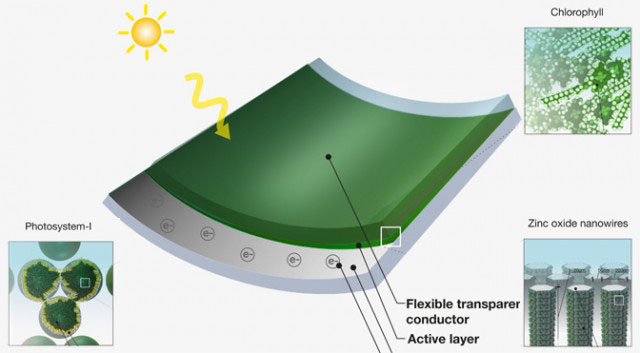Andreas Mershin, a research scientist at MIT, works on the only drawback with solar power generation: the cost.
To solve this problem he has created solar panels from green plant waste like grass clippings. Mershin says in a few years, it will be possible for any DIY enthusiast to make his or her own solar panels by making use of otherwise worthless agricultural waste as the raw material.
Mershin explains that creating a solar cell would be as easy as mixing any green organic material with a bag of cheap chemicals and painting the mixture on a roof.
The Science Behind These Cells:
These workable solar cells were created by using a combination of new materials that isolate the PS-I molecules which are responsible for photosynthesis. To make these PS-I molecules work, researchers had to extract the protein that’s at the center of photosynthesis and stabilize it so that it continues to live and operate in a solar panel.
They also developed a complicated nanostructure of zinc oxide (ZnO) and titanium dioxide (TiO2), supported by nanowires that carry a flow of current.
Experimental solar cells made using this process were able to convert only 0.1 % of sunlight to electricity. However, this percentage will improve upon further research.







